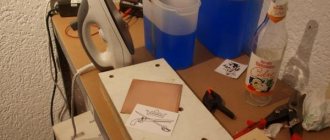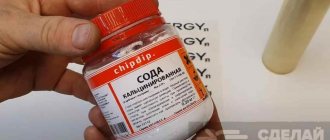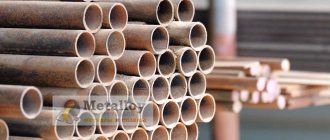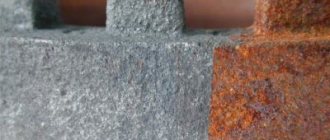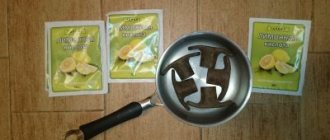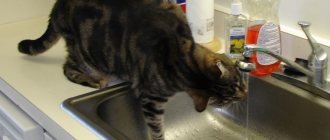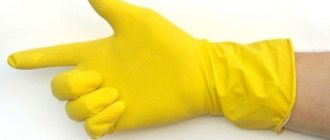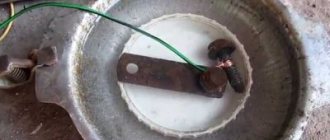This article describes how to properly care for nickel-plated and chrome-plated surfaces of various interior items and plumbing fixtures.
Nickel and chrome plating of various interior items and sanitary ware is rightfully considered one of the most practical and, with proper care, can serve for many years. It is thanks to its practicality and low cost that many household items have this coating - it could be a bathtub faucet, a door handle or furniture accessories. To ensure that such products do not fade over time and remain in good condition for a long time, you need to know how to properly care for them.
The first thing to keep in mind is that under no circumstances should you use any hard abrasive substances or use iron brushes or sandpaper when cleaning nickel and chrome plated surfaces. This leads to damage to the surface, leaving scratches.
In addition, it must be taken into account that the use of acid-containing substances, solvents, and various means for removing limescale is also unacceptable. Otherwise, we will not get a shiny, mirror-like surface, but a dull and darkened one.
What should you use to clean these surfaces? Of course, in the first place are branded, specially developed product care products with a nickel-plated and chrome-plated surface. But you can also use simpler products, but with a composition that implies the presence of soft or fine abrasives, organic solvents, ammonia, and wax. All this can be read on the label of the cleaning product manufacturer.
The most common, so to speak “at-home” method of cleaning a chrome surface is carried out using a soft cloth and a warm soapy solution. Moreover, if limescale has formed on the surface, you can get rid of it with the help of grape vinegar.
To clean nickel-plated surfaces, special pastes and liquid products are used, as well as regular chalk or a solution prepared in this way: add one teaspoon of salt to one tablespoon of vinegar.
Rust from a nickel-plated product can be easily removed using fat using the following method: you need to apply any animal or fish oil to the rust spots, and after a couple of days, thoroughly wipe the product with a soft cloth soaked in ammonia.
When using various purchased products to clean products, you should not leave them in contact with the surface for a long period of time; you must thoroughly rinse them with water after application after the time specified in the instructions.
Finally, it should be noted that the nickel-plated and chrome-plated surface must be cleaned as often as possible, without waiting for it to become “overgrown” with dirt and oxidation, and then it will last much longer.
The samovar is a symbol of Russian tea drinking, which used to be very popular. Nowadays it is not served on the table so often, but it is still considered that such tea is especially tasty and rich.
How to clean rust from a chrome faucet?
Mix equal parts water and vinegar in a bucket or sink. Dampen a sponge with the solution and wring it out, then rub it on stubborn stains to work the diluted vinegar on them. When you are satisfied with the result achieved, rinse the chrome surface again with clean water.
Interesting materials:
How to find out which processor is in the system unit? How can I find out what my ping is? How can I find out which dual-core processor I have? How to find out PC specifications? How to find out the Office 2022 key? How to find out the Ogrn code? How to find out the OKATO code of an organization by TIN? How to find out the UPFR code of an organization? How to find out the number of children in the palm of your hand? How can you tell if a hen is a laying hen or not?
How to clean a copper samovar
Before using antique utensils, you need to properly carry out preliminary preparation and disinfection. Let's consider how to do it right.
How to clean the inside
One option is to remove plaque with citric acid:
- The package of the substance is filled with water.
- Fill the samovar and boil it.
- Then leave for 12 hours. During this time, plaque and scale will dissolve, and the copper samovar can be washed with water.
To clean the inside of the samovar, you can use finely chopped lemons instead of acid crystals, but you will need much more of them - 1 kg (5-6 pieces). This good method allows you to quickly restore the original state of the metal.
How to clean the outside
During the Soviet era and earlier, Tula samovars were removed from carbon deposits using river sand. But this method significantly damages the coating. Therefore, let's consider a more gentle method.
You can clean an antique copper samovar with a homemade mixture of coarse salt, vinegar and flour:
- Everything needs to be connected.
- Using a sponge, apply the composition to the outer surface of the samovar.
- After cleaning, polish the kitchen utensil to a shine using a cloth.
This method can be used to remove grease, soot, rust, and soot from an antique samovar.
Tip : It is recommended to prepare the surface before cleaning. It is better to do this with laundry soap (soap solution).
To prevent a green coating from oxidation from appearing on a copper samovar, you need to periodically wipe it with lemon. If this has already happened, use a brush. For clarity, you can watch videos and photos of the process.
Features of the material
Stainless steel cookware is a success for a reason - the advantages of steel products have been tested for more than one generation. Housewives value shiny kitchen utensils for their lightness, durability, and ease of cleaning. The main six advantages of cookware are considered.
- Corrosion resistance. Stainless steel contains chromium. It is this element, when reacting with oxygen, that creates a protective anti-corrosion film on the surface of the material, which has the ability to self-renew.
- Strength and durability. Stainless steel is resistant to mechanical deformation: chips, scratches. With proper care, products made from this material can last for decades.
- Heat resistance. Utensils made of steel do not lose their functional characteristics over a wide range of temperatures: kitchen appliances made of stainless steel can be used at both low and high temperatures.
- Environmental friendliness. The high density of the material does not allow pathogenic microorganisms to accumulate on the walls of the dishes. Scientific research has confirmed the bacteriostatic properties of stainless steel.
- Versatility. Steel cookware can be used for cooking food on gas, glass-ceramic and induction cookers.
- Impeccable appearance. The metallic shine of steel utensils will fit into any interior: such utensils look stylish and presentable if you properly care for them.
Stainless steel cookware does not affect the taste of food during cooking or during long-term storage in it.
Possible damage and contamination
Kitchen utensils made of steel retain their advantages only with proper care. If the surface of the product is damaged, dirt and grease accumulate on the walls of the kitchen utensil. This leads to the following problems:
- anti-corrosion properties are lost;
- wear resistance decreases;
- food begins to burn during heat treatment;
- the appearance becomes dull and unsightly.
Improper use can lead to three “diseases” of steel cookware.
- Nagar. Immediately uncleaned, the yellow coating formed by splashes of fat gradually becomes a hard, dark-colored “shell.”
- "Rainbow" on the bottom and walls. The film lining the product thickens when heated to 100 °C. When the layer's density increases tenfold, it turns blue or rainbow. This affects not only the appearance of the product, but also its functionality.
- Scale. Limescale is a deposit of calcium carbonate in water. The metal reacts with impurities contained in tap water: dotted spots appear on the inner surface of the product. When boiling, chlorine and mineral salts settle on the bottom and walls, forming spiral-shaped “patterns”.
To extend the life of kitchen utensils and maintain their appearance, it is worth providing stainless steel utensils with proper care.
Secrets of care
Stainless steel cookware needs to be maintained regularly. Three simple rules will help preserve the functionality and decent appearance of the dishes for a long time, and will not allow severe contamination.
- Regular cleansing. After each use, the product must be washed with a soft sponge and detergent with a gentle formula. This measure will prevent the appearance of stains and eliminate the need to scrape off pieces of dried food.
- Delicate wash. It is recommended to wash stainless steel utensils by hand; you should not use a dishwasher.
- Perfect dryness. If you leave a stainless steel appliance to dry naturally in the open air, the dishes may become covered with dark spots. Therefore, each time after washing, the product must be wiped dry with a clean towel.
When cooking, you can only use filtered water and do not heat an empty pot or frying pan for a long time. If you cannot avoid contaminants that a regular detergent cannot deal with, you need to resort to stronger methods.
Principles of cleansing
Cleaning steel utensils is based on four principles.
- We say a firm “no” to harsh methods. Do not use products containing abrasives; the use of metal sponges and brushes is also unacceptable.
- We choose products without ammonia and chlorine. These components may damage the surface of products.
- We use salt and soda only in warm and hot water. Adding large amounts of these products to cold water can cause dark spots to appear on stainless steel cutlery.
- Don't put off cleansing. “Fresh” contamination is much easier to remove.
You can fight pollution using store-bought or folk remedies.
How and with what to clean a nickel-plated or chrome-plated surface
June 12, 2017
June 12, 2017
Elena Ostinova
Womans-way
A unique home remedy, napkins and rags will allow us to wash all nickel-plated surfaces in the apartment until they are mirror clean.
And again we return to issues of cleanliness and aesthetics.
In most of our apartments, items with chrome or nickel coating have long been adopted. To put it simply, we have filled our homes with all sorts of shiny gadgets and trinkets. Cleanliness and beauty are absolutely interconnected things, especially when it comes to shiny surfaces. Mixer taps, heated towel rails, roof rails, knife stands, toilet paper holders delight us with their metallic shine... But not for long!
All of the above looks very beautiful and aesthetically pleasing, but very tacky (those who have encountered this problem know what they are talking about). And most importantly, all this brilliant splendor does not tolerate rough abrasive or reactive chemical interference! This will require special care.
And what to do in this case? Refuse to use such beauty...?
No way! ... Let's clean it up!
Of course, you can run to the store, spend a lot of money and time on stories from abstruse consultants, take up an entire shelf in the pantry with various chemicals and care and cleaning devices... Often, all this is expensive and does not guarantee the expected effect (and sometimes even spoils the coating).
But doing this after our advice will be very easy and inexpensive.
For this task, all we need is any glass and surface cleaner (you probably have it in your household) and a cloth or paper napkin.
For convenience, it is better to pour the product into a spray bottle, so it will be easier for you to reach hard-to-reach places and bends. And then, simply spray the product onto the contaminated nickel-plated or chrome-plated surface and wipe with a cloth or napkin.
If the contamination is not severe, one light movement on the surface will be enough to return it to its original shine.
If the item is heavily soiled, you will need to go over it several times with a napkin after spraying the product.
I think the effect will pleasantly surprise you. Of course, you cannot remove large accumulations of rust and salt deposits in this easy way. But believe me, if you periodically treat your nickel and chrome plated surfaces according to our advice, then you will never need serious cleaning.
In this way, you can easily clean the faucet in the bathroom or kitchen from limescale. You can keep your kitchen utensils and accessories in perfect order without much effort. Easily remove dirt from kitchen railings, chrome knife stands, nickel-plated door handles, etc.
You will always have perfect shine on all surfaces.
I think you will appreciate the simplicity, cheapness and effectiveness of this method.
After all, for our purpose we do not need expensive chemicals or special devices. The solution to this problem is at our fingertips...
Try it, you won't regret it!
PS
Of course, the market is overflowing with offers for cleaning and caring for our interior items, but their prices are also serious. I would also like to reduce the number of jars and bottles in our cabinets and pantries. Our offer kills two birds with one stone: when we buy a window cleaner, we immediately buy a product for cleaning our shiny surfaces, as they say, in one bottle. Which gives us real savings in money and space in the closet in the pantry. And our third main bunny is bright reflections from clean shiny surfaces!
General recommendations for cleaning and storage
Proper care and proper storage organization will help preserve the shine and original appearance of stainless steel cutlery.
To do this, follow simple recommendations:
- Wash spoons, knives and forks immediately after eating . It is extremely difficult to wash off dried-on food particles, and they gradually accumulate, spoiling the aesthetic appearance of the product. In addition, food debris is a favorable environment for the proliferation of pathogenic bacteria.
- Soaking will help remove dried food . Dissolve a small amount of detergent in warm water and leave the appliances in it for a few minutes. Remove softened dirt with a soft sponge.
- Do not use abrasive objects for cleaning - they leave scratches.
- If you want to clean spoons and forks to make them shine, rinse them in water with the addition of ammonia .
- After washing, be sure to wipe all appliances dry to avoid the appearance of plaque and stains.
- During storage, all items must be kept in a special box , where it is clean and free of moisture.
Chrome plating: concept and applications
Chrome plating is a special technology of applying a thin layer of chromium to metal products. Today, galvanic chrome plating is most often used. The process involves the deposition of chromium using an electrolytic solution onto a metal surface directly under the pressure of electrical charges.
The popularity of this operation is due to the fact that the chrome-plated part acquires improved technical and operational characteristics: strength, resistance to negative environmental factors. All this allows the metal to be used not only for finishing, but also for decorative purposes.
Chrome elements are widely used in mechanical engineering; electrical and plumbing equipment is created, which can be seen in almost every bathroom.
The disadvantages of this type of surface undoubtedly include low resistance to mechanical stress - small scratches, holes and chips appear on the coating quite quickly. If the material is used for external finishing work, then under the influence of oxygen (oxidation reaction) rust may also appear.
How to clean nickel plating
Nickel plating is very beautiful and shines brightly, but in order for it to always be like that, you need to treat it correctly.
How to get rid of plaque
To get rid of plaque, an old and proven Soviet method is used. You need to put 1 kg of potato peelings in a container for boiling water and boil them. Then leave for 6 hours. Dampen a rag with baking soda and wipe the walls with it. The method is also suitable for descaling the inside of an electric samovar.
How to wash the outside
Prepare a solution of 30 g of tooth powder, 60 g of ammonia, 100 g of water. Mix everything and apply to a nickel-plated surface. This method can even remove coal. After the procedure, the sides of the device will shine.
How to clean a stainless steel product
The most common problems encountered with stainless steel products are staining and tarnishing. Let's look at how to get rid of them.
How to clean the heater and interior walls
You can buy a teapot solution in the store. The main thing is that it is not for the dishwasher or washing machine. And it is very important to strictly follow the instructions so as not to damage the device for boiling water.
How to clean cutlery
No matter how often we receive guests and how formally we set the table for family meals, cutlery is always present in our home.
Not a single modern person can do without them. A variety of spoons, forks and knives are an integral part of our lives. It is not surprising that housewives periodically have the question: “How to clean cutlery?” Perhaps you inherited them from your grandmother. Or maybe you were lucky enough to buy cutlery to suit your taste. Initially, they all have a very attractive appearance: sparkling, alluring with a mirror shine, smooth or patterned, embossed... With just their appearance, they create a festive mood even for the most everyday dinner. But, unfortunately, over time, this beauty is hidden under a dark coating and a greasy film, which is difficult to simply wash, even with foam. That’s when you have to think about how to clean the cutlery and return it to its original appearance.
The first thing you need to do is determine what your forks, knives and spoons are made of. Most often it is stainless steel, silver or cupronickel (an alloy of silver with copper and zinc). Sometimes silverware is decorated with blackening or gilding. Aluminum, which was once popular, is now extremely rare and, of course, this dishware is in no way ceremonial.
The Cozy Kitchen website offers you a collection of methods that have been tested by time and the experience of many housewives. Their main feature is environmental friendliness. We talked about what household chemicals contain. That is why, when choosing what to clean cutlery with, it is worth choosing the means at hand. Moreover, they are affordable and can be found in any kitchen. So let's start cleaning!
What to choose in the store
When you go shopping for a stainless steel dish cleaner, you need to:
- analyze reviews - recommendations will help you make the right choice;
- study the composition - the product should not contain abrasives, chlorine and ammonia;
- pay attention to the markings - the manufacturer must indicate for which materials a particular product is suitable.
It is advisable to give preference to proven means. Judging by the reviews, they have proven themselves well:
- "Dafor";
- "The Shine of Steel";
- "Selena";
- "Shumanite";
- Luxus;
- Help;
- Delu;
- Dr. Beckmann;
- Fresh.
Some housewives use oven cleaners to clean stainless steel cookware from grease and other contaminants. They apply the gel for 15-20 minutes, then wash the product with regular detergent.
How to tidy up a litunite device
Brass should be stored in a place where there is no dampness. This way plaque will form less often. But, if it does appear, it should be removed carefully; it is better not to use products based on aggressive chemicals.
Descaling
You can get rid of scale with vinegar. To do this, dilute 1 bottle of acid with water so that the liquid fills the entire volume. Heat to 60 degrees and leave for 60 minutes. After the procedure, the inner surface must be washed.
How to wash a surface
Ammonia and oxalic acid clean brass perfectly. To do this, take 1 tbsp. ammonia or acid and add 1 liter of water. You need to clean the samovar with the solution, and a few minutes after that, wipe it with a sponge and soda to neutralize the effect of the acid. Then you should rinse off the product, be sure to wipe the surface dry, after which you can polish.
